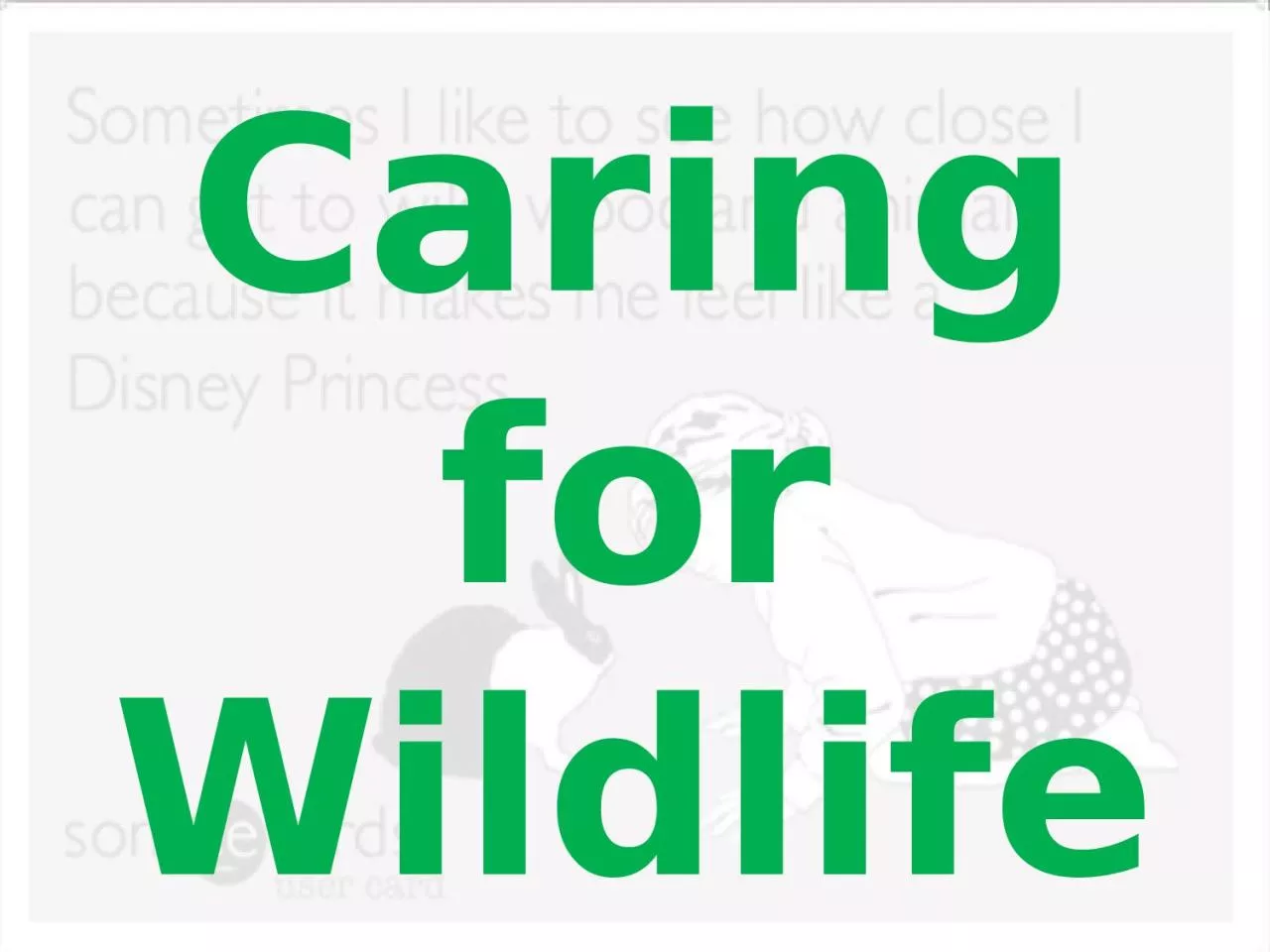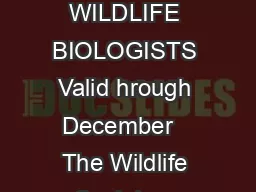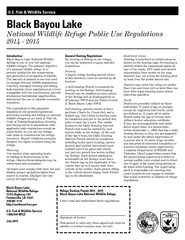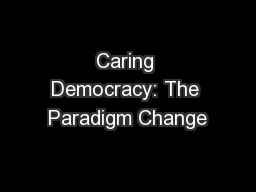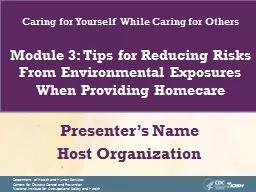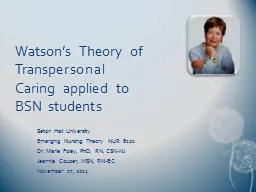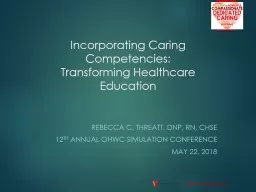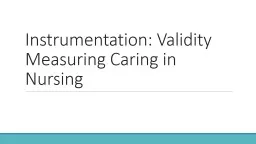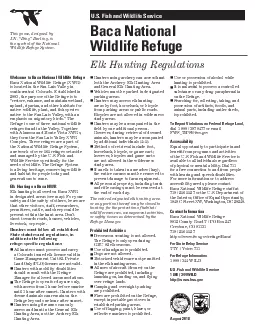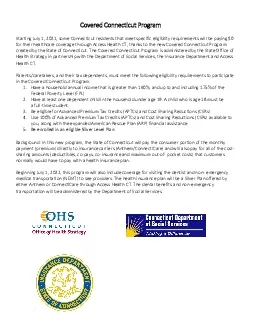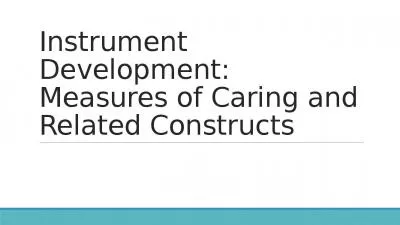PPT-Caring for Wildlife What’s Going to be Covered?
Author : alis | Published Date : 2023-05-20
The student will Describe when to help a wild animal Understand when NOT to help a wild animal Know the ethical responsibilities of rehabilitating wildlife Describe
Presentation Embed Code
Download Presentation
Download Presentation The PPT/PDF document "Caring for Wildlife What’s Going to be..." is the property of its rightful owner. Permission is granted to download and print the materials on this website for personal, non-commercial use only, and to display it on your personal computer provided you do not modify the materials and that you retain all copyright notices contained in the materials. By downloading content from our website, you accept the terms of this agreement.
Caring for Wildlife What’s Going to be Covered?: Transcript
Download Rules Of Document
"Caring for Wildlife What’s Going to be Covered?"The content belongs to its owner. You may download and print it for personal use, without modification, and keep all copyright notices. By downloading, you agree to these terms.
Related Documents

